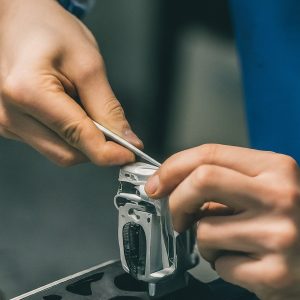The final assembly of plastic injection-molded parts involves the process of putting together individual components to create a finished product. The specific steps and techniques can vary based on the complexity of the product, the number of components, and the assembly requirements. Here’s a general overview of the typical steps involved in the final assembly of plastic injection-molded parts:

- Part Inspection:
- Before assembly, each injection-molded part undergoes a visual and dimensional inspection to ensure it meets quality standards. Any defective or out-of-spec parts may be set aside for rework or rejection.
- Pre-Assembly Preparation:
- Components may require additional processes such as cleaning, deburring, or surface treatment before assembly. This ensures that parts are free from contaminants and any imperfections that might affect the assembly process or the final product’s quality.
- Assembly Line Setup:
- The assembly line is set up with workstations, tools, and equipment required for the assembly process. Workers may have access to assembly instructions, assembly jigs, and fixtures to aid in the efficient assembly of components.
- Assembly Techniques:
- Manual Assembly: Some products are assembled manually by skilled workers who follow assembly instructions and use hand tools to put together components.
- Automated Assembly: For high-volume production or products with complex assembly processes, automated assembly equipment may be used. This can include robots, conveyor systems, and specialized machinery.
- Fastening and Joining:
- Components may be joined using various methods such as screws, bolts, adhesives, or ultrasonic welding. The choice of method depends on the materials involved and the design specifications.
- Testing and Quality Control:
- Assembled products may undergo functional testing or quality control checks to ensure that all components are properly assembled, and the final product meets the required standards. This can include electrical testing, pressure testing, or other specific tests depending on the product.
- Packaging:
- Once the final assembly is complete and the product passes quality checks, it is packaged for shipping. Packaging may involve placing the product in trays, boxes, or blister packs, along with any necessary user manuals or documentation.
- Shipping:
- The assembled products are then shipped to distributors, retailers, or directly to end customers.
Throughout the entire assembly process, attention to detail, precision, and quality control are crucial to ensure that the final product meets customer expectations. Assembly processes can vary widely depending on the nature of the product, industry standards, and the desired level of automation.

